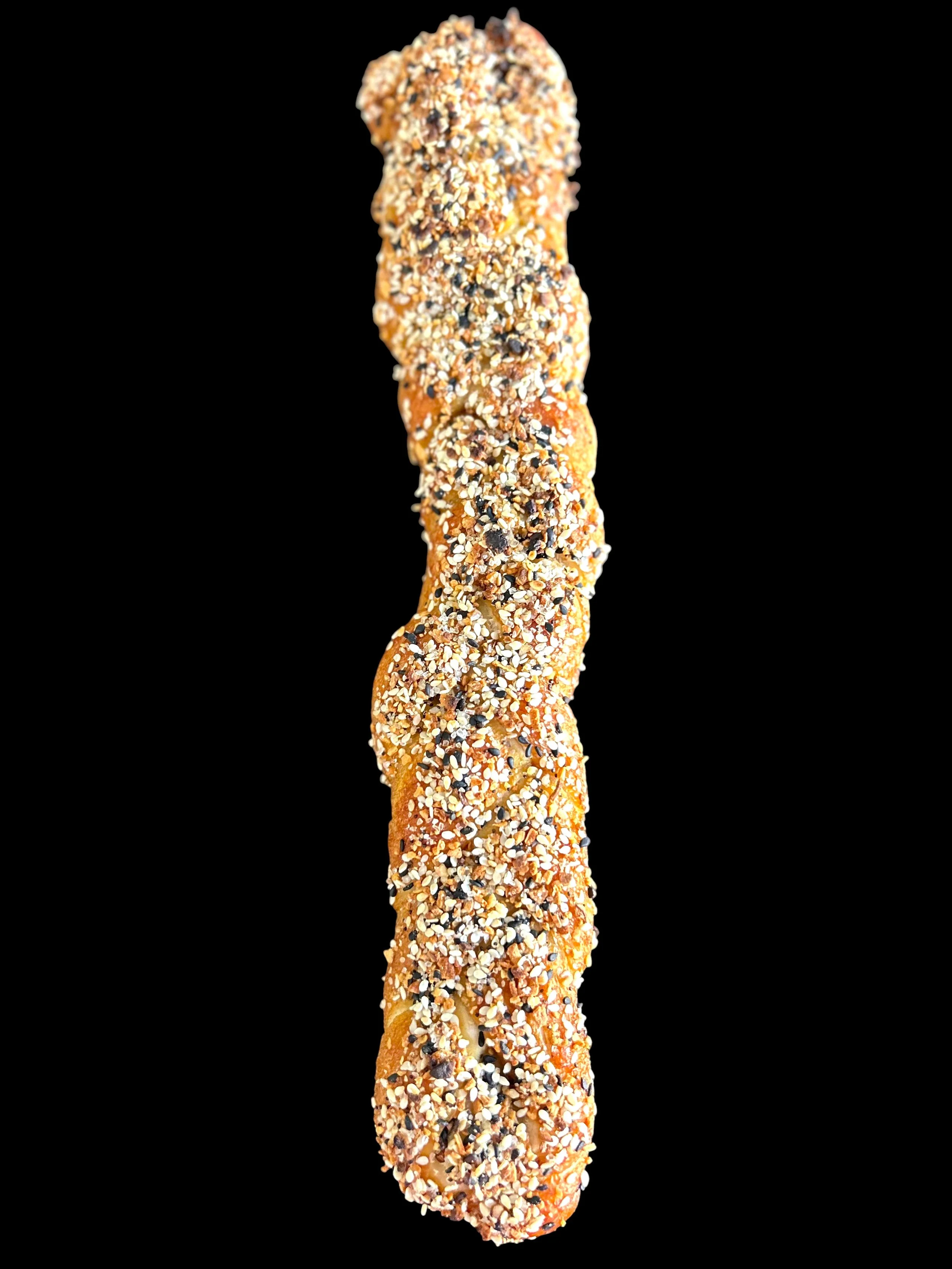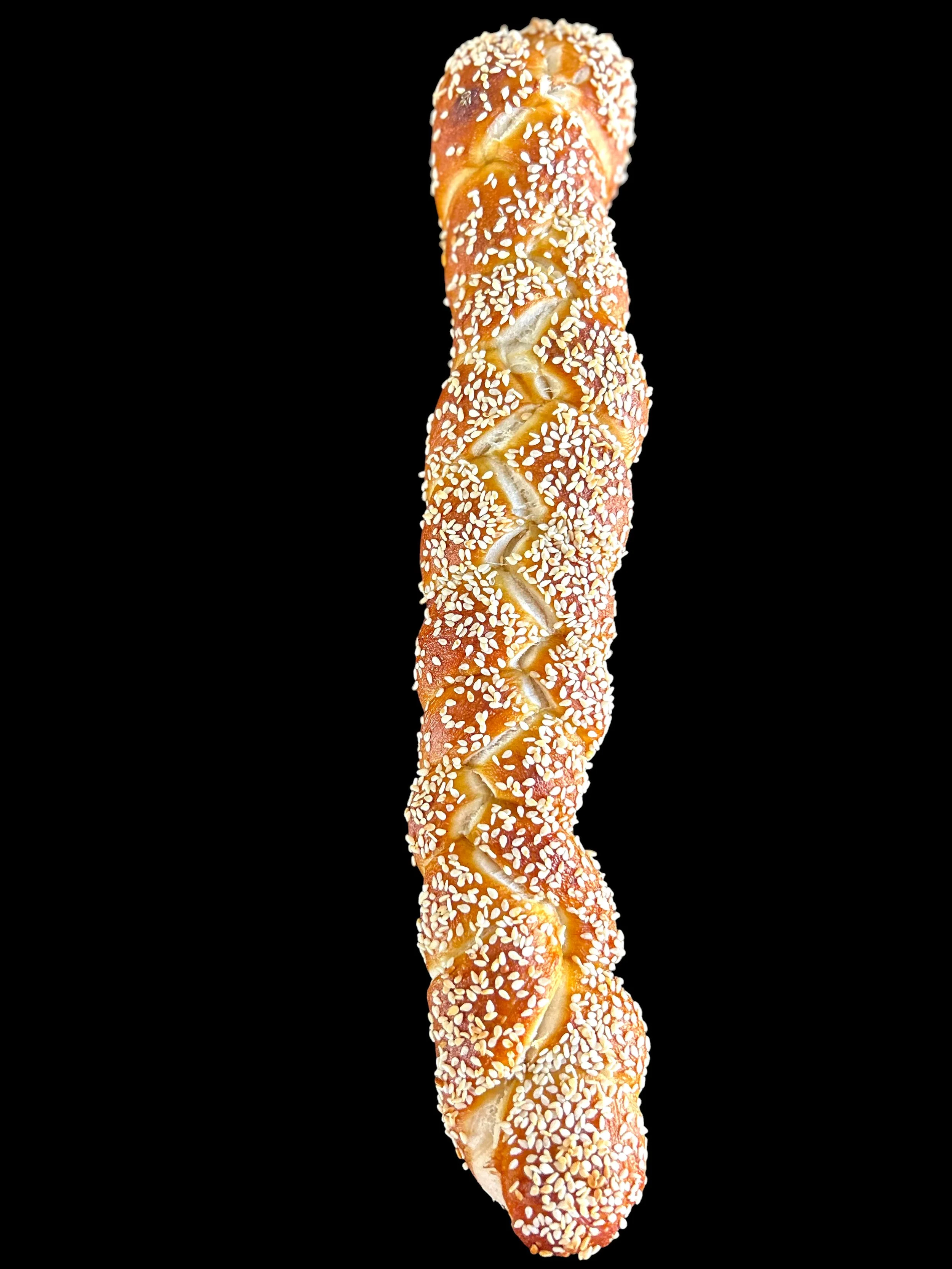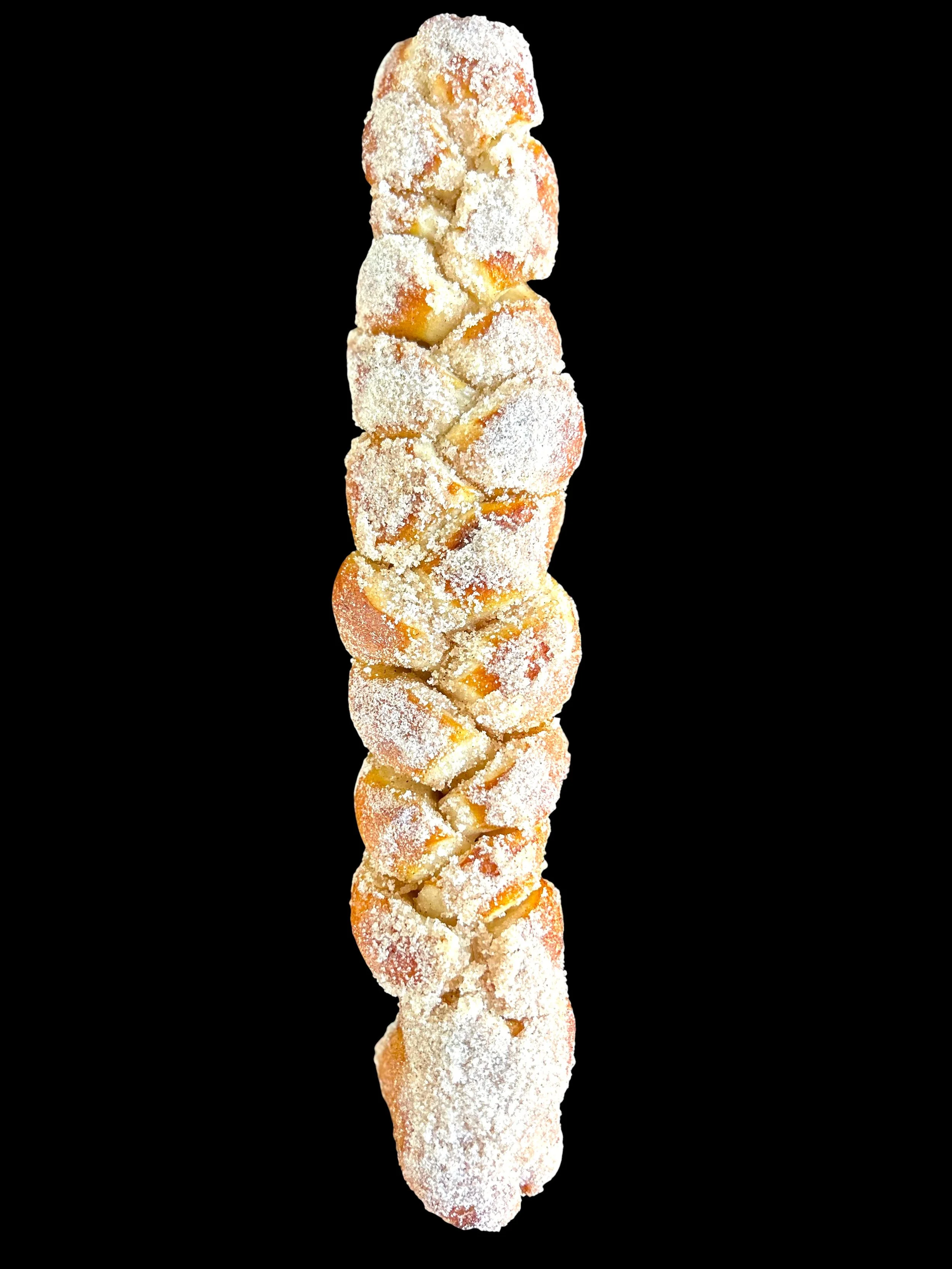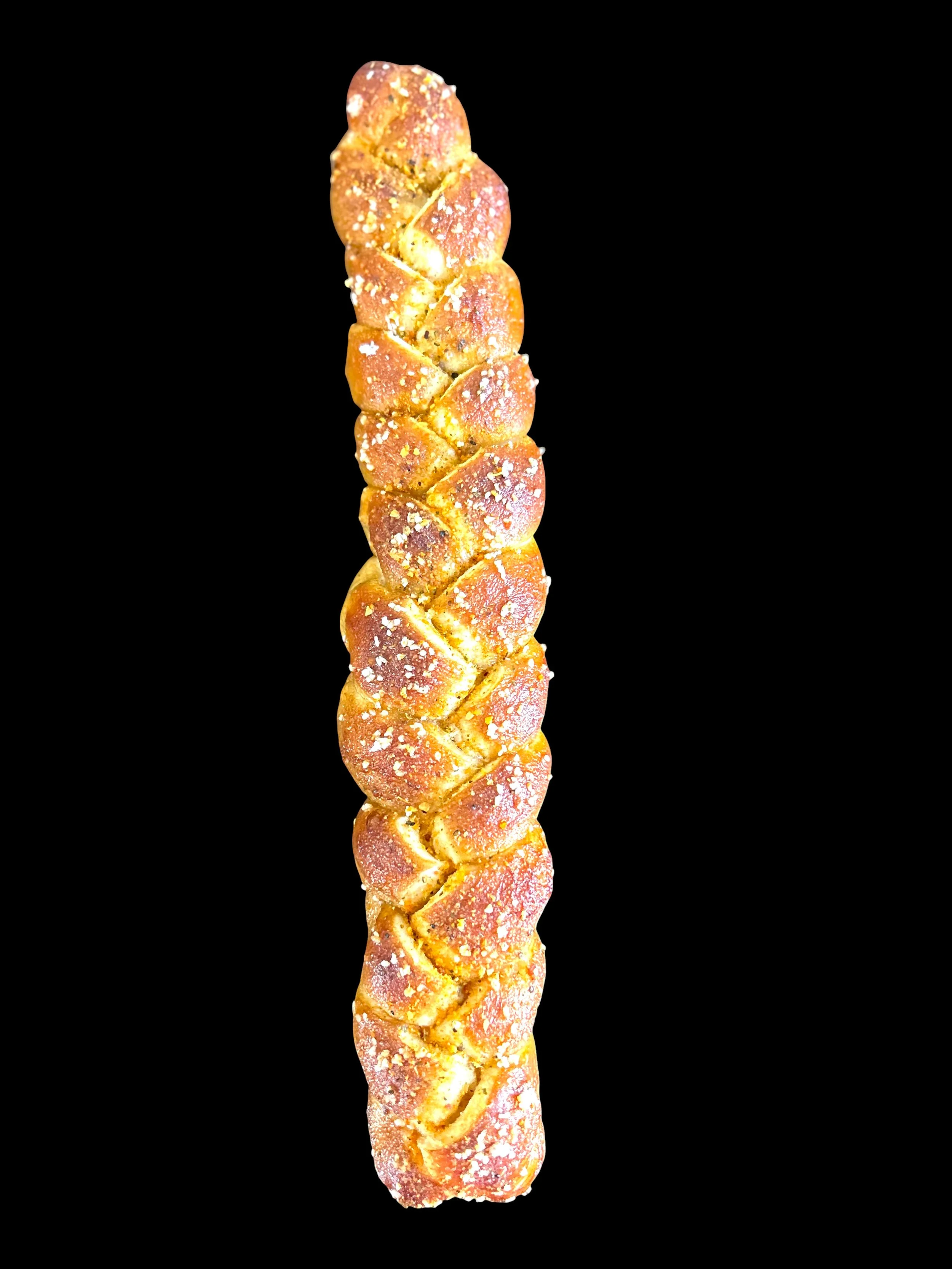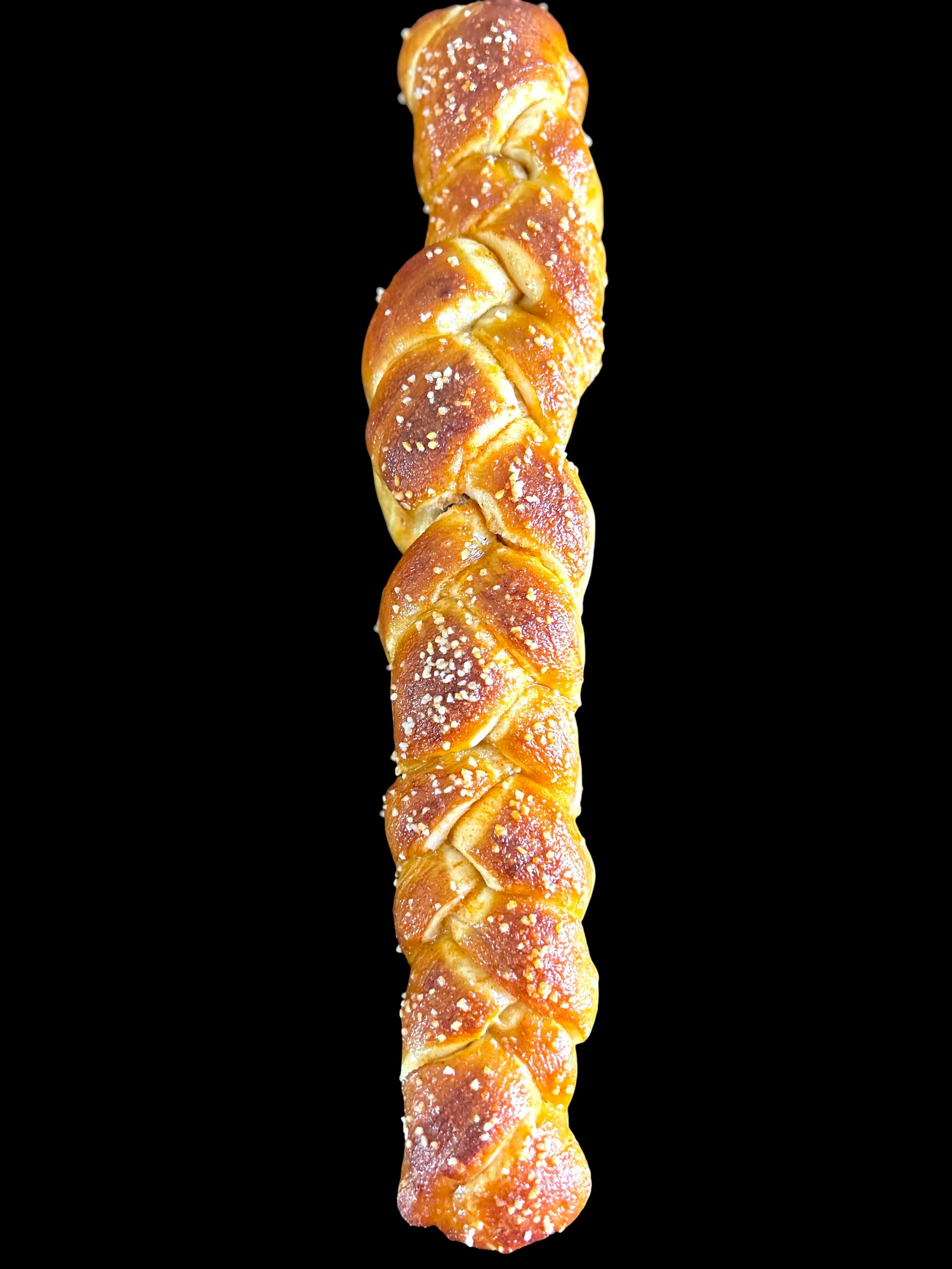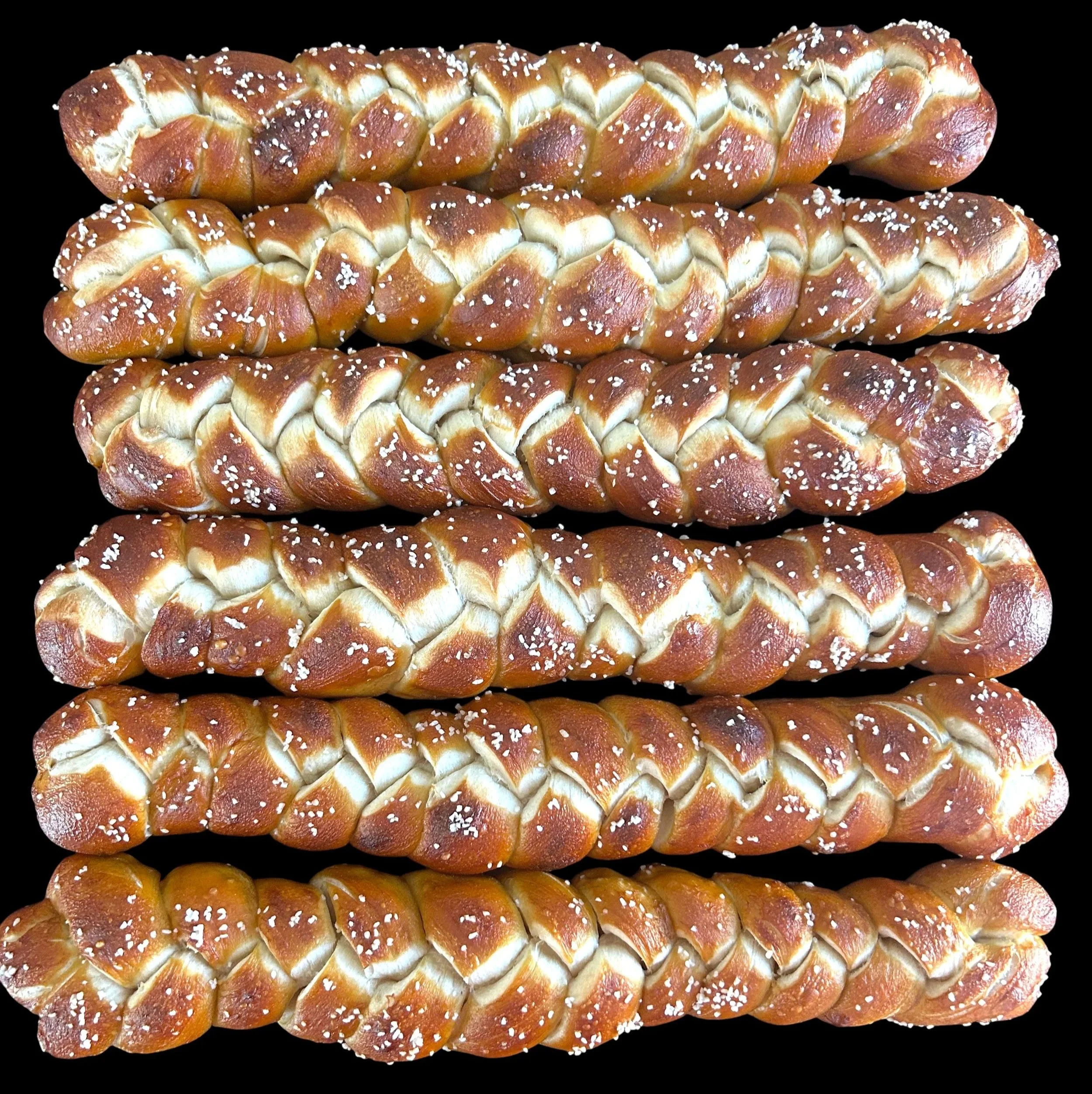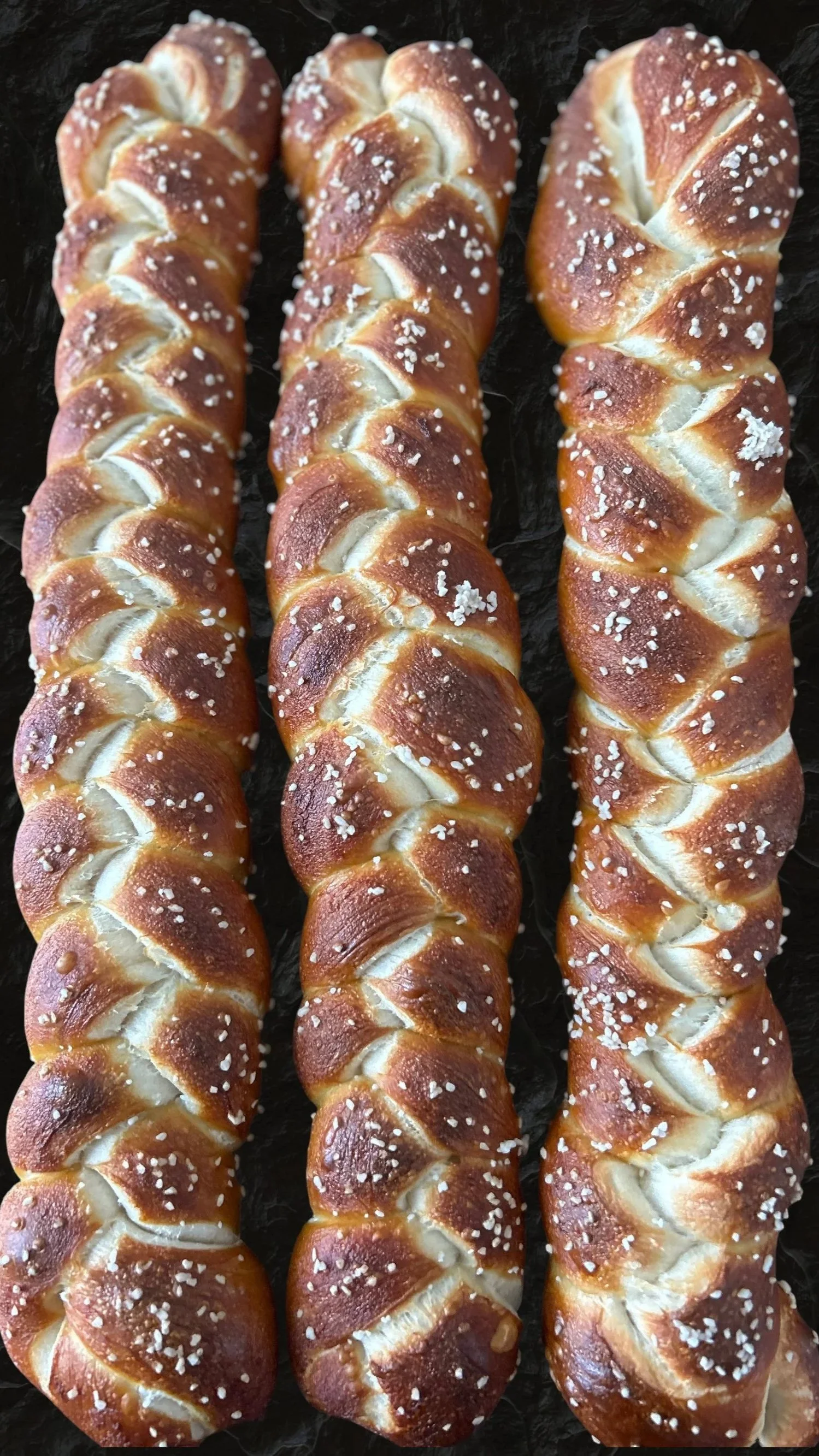
Pretzel Perfection
Made with only five ingredients:
Flour, Water, Sugar, Salt & Yeast
Why the twist & not the traditional pretzel shape?
The twist, as we call it, is a pretzel with more possibilities. No longer locked into cohabitating merely with mustard.
It can be sliced horizontally and used for a sandwich, it can be cut vertically to share—simplicity and symmetry, is wonderful, isn’t it?!
You can melt cheese evenly on top—throwing a few slices of ham, turkey, or pepperoni down first is delicious.
They're great for dipping into cream cheese, or you can spread it on like a bagel. Try them with soup, chili, chicken salad, icing, and of course, mustard.
Choose TWIST over Tradition
Choose TWIST over Tradition
Our Story
Philadelphia born and raised, we relocated to central Florida in the early 2020s. We REALLY missed our beloved Philly soft pretzels.
So we set out on an adventure to bring the city of brotherly love’s second most famous food item to Florida—cheesesteaks are a bit too fattening to eat every day!
Our pretzels are made from scratch with just five ingredients (flour, water, sugar, salt and yeast), hand twisted and baked on steel to give the most authentic, chewy and delicious pretzel south of the Liberty Bell! .

Did you know…..
Philadelphians eat TWELVE times as many pretzels as the average American—we’re trying to change that!
Roughly 80 percent of the pretzels produced in this country come from Pennsylvania.
In the 1860s pretzel-twisting was the second-highest-paying job in Philadelphia—Tobacco workers were the highest paid.
German immigrants introduced pretzels to America in the 1700s. Many settled in Pennsylvania, becoming known as the Pennsylvania Dutch—Dutch being misconstrued for the word “Deutsch,” the German word for “German.”
Pretzels get their sheen, distinct texture and taste from what is known as the Maillard reaction, a chemical reaction that takes place during the baking process which causes the protein in the flour to brown.
Historians believe that soft pretzels originated with Christian monks in Italy around 610 A.D. They were shaped to resemble arms crossed in prayer and given as a reward to children who learned their prayers.
The origin of the saying "tying the knot" for marriage is believed to have come from the pretzel, as it symbolized the joining of two families. Pretzels were incorporated into Swiss wedding ceremonies during the 16th century. A bride and groom would break a pretzel together, make a wish, and each eat half to symbolize their union.



